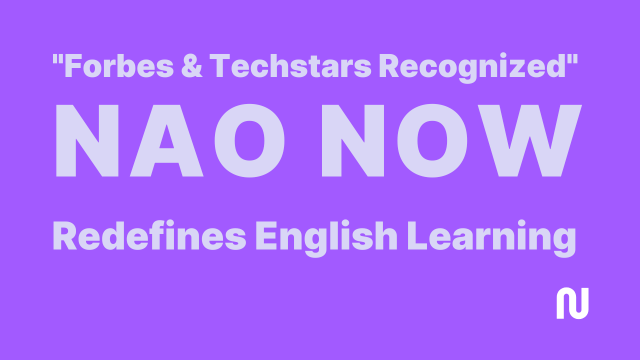Complete Guide to the American Education System - Classes, Assessments, and School Districts from Kindergarten to High School







What's Different About the American Education System?
American education is largely governed at the state level, emphasizing discussion-based classes and self-directed learning. Teachers act more as facilitators than instructors, and exams are often administered without supervision. From differences between public and private schools to grading systems, academic calendars, and compulsory education laws, this article explores the American education system with rich examples. At the end, we’ll also introduce Nao Now, a platform where your child can experience American-style education right here in Korea.
1. School Structure and Curriculum
K–12 System
The foundation of American education is the K–12 system, which includes kindergarten through 12th grade—a total of 13 years of formal education.
- Elementary School:
Children typically enter around age 5 or 6 and continue through 5th or 6th grade. Some states include up to 8th grade. Core subjects include reading, writing, math, science, and social studies, along with art and physical education. - Middle School:
Usually includes grades 6–8 or 7–8. Specialized teachers for each subject are introduced, and students begin exploring electives like technology, music, and physical education. - High School:
Covers grades 9–12, a critical period for college or career preparation. Students choose from required courses and advanced classes such as AP (Advanced Placement) or Honors. - College:
Most universities offer four-year bachelor's degrees, though two-year community colleges are also common. Many students begin at a community college and transfer to a four-year university to manage costs and academic load.
2. Educational Approach
State-Based System
Each of the 50 states oversees its own educational policies, leading to variations in curriculum, graduation requirements, testing methods, and teacher certifications. For example, some states require environmental science for graduation, while others use a portfolio system instead of standardized exams.
Even within the same state, differences exist between school districts regarding calendars, subjects, and afterschool programs—making school district selection a key factor in real estate.
Public vs. Private Schools
About 90% of K–12 students attend public schools, which are funded by state and local taxes and are free to residents of the school district.
Private schools charge tuition and admit students selectively. They range from religious schools to elite boarding schools and specialized arts or science academies.
Homeschooling is on the rise, and charter schools (public but with greater autonomy) are also growing in popularity.
Student-Centered Learning
A core philosophy of American education is that the student is the driver of their learning. Teachers serve as guides who encourage students to ask questions, solve problems, and express opinions.
Classes emphasize debate, group projects, individual presentations, and hands-on experiments to build critical thinking and communication skills.
For example, a middle school social studies class might discuss “What is justice?” while a high school biology course might assign a mini research paper.
Role of Teachers
Teachers are not just knowledge transmitters but learning facilitators. They encourage questions, foster a culture that welcomes mistakes, and often mentor students in emotional regulation, teamwork, and career planning.
As a result, students feel comfortable engaging and expressing their thoughts.
3. Grading and Assessment
American schools typically use a holistic assessment system, including:
- Essays and research projects
- Class participation and presentations
- Group project results
- Online quizzes and open-book exams
- Portfolios
Feedback is provided frequently—both written and verbal—focusing on growth over time.
Unsupervised Testing
Many schools use an honor code system that allows students to take tests without supervision, reflecting trust in students' integrity and emphasizing learning over test performance.
It's common to see test papers include a statement like, “Please answer honestly according to your conscience.”
4. Academic Calendar
Most schools follow a two-semester system, running from September to June or July, with winter and spring breaks.
Some adopt a trimester (3-term) or quarter (4-term) system to allow for more flexible course scheduling and deeper focus on selected subjects.
5. Compulsory Education
Most states require school attendance from age 6 until 16 or 18.
Homeschooling is legal with proper registration and curriculum reporting, allowing for flexible, personalized learning.
6. School Districts
The U.S. uses a residence-based school district system. Students attend schools in their local district, making district quality a major factor in housing decisions.
Districts can differ greatly in terms of academic performance, safety, and college acceptance rates—making research critical when relocating or planning for study abroad.
7. Studying Abroad in the U.S.
- School Selection: Choose based on goals—public (exchange programs), private, boarding school, or community college.
- Application Preparation: Prepare transcripts, recommendation letters, personal statements, and attend interviews.
- Visa Application: Receive the I-20 form → Attend U.S. Embassy interview → Receive F-1 student visa.
- Arrival & Orientation: Attend orientation, prepare for daily life, and confirm housing arrangements.
Why American Education Matters
American education fosters more than knowledge—it builds critical thinking, creativity, and independence.
If you want to equip your child with global communication skills and future-ready abilities, experiencing American-style education can be a meaningful choice.
Nao Now – Experience American-Style Education in Korea
Nao Now is an online English program that connects students with Ivy League mentors for 1-on-1 real-time lessons. Through authentic discussions and student-led learning, your child can experience the best of American education.
Our curriculum focuses on developing critical thinking, creativity, and communication through fun, practical topics like:
- The science of NBA basketball
- U.S. presidential elections
- The cultural significance of Hello Kitty
📌 Experience the essence of American education in a free 25-minute trial class.
👉 Book Your Free Trial Now



.png)





.png)
.png)
.png)

.png)